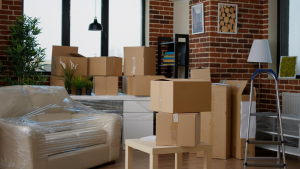When relocating from one place to another, there are many factors to consider, including a guide to prepare furniture for moving. Moving house can be stressful, but proper planning and organization can make the process a lot smoother. This comprehensive guide aims not only to help you navigate the process but also to ensure that your furniture arrives at your new location undamaged.
Assessing Your Furniture Inventory
The first step is assessing the items you have. It is important to take a full inventory of what furniture you own to help you organize and plan for packing. Take this opportunity to also assess which items are in need of repair or perhaps are not worth taking along. Items that are severely damaged might be better off replaced than transported. This inventory will serve as a foundation for your moving plan, ensuring you allocate adequate time and resources for each piece.
Disassembling Large Furniture Items
Once an inventory is completed, the next step will be to provide ample protection to your furniture. Start with disassembling your larger items where possible. This not only minimizes the risk of damage during transit but also saves crucial space in the moving vehicle. It is essential to keep all screws, bolts, and other small parts together, either in a marked bag or by taping them to the piece of furniture they belong to. The process of disassembling can be daunting, but remember, preparing your furniture for moving is critical to protect it from any potential harm. Make sure to follow manufacturer instructions for disassembly to avoid any damage.
Cleaning Your Furniture
After disassembling the furniture, you should give it a proper cleaning before packing. This not only prevents dragging dirt, dust, and possible pests to your new place but also allows you to minimize damage. For example, dirt and dust can scratch the surface of wooden furniture during the move. Use appropriate cleaning solutions for different types of materials; for instance, wood polish for wooden items and a mild detergent for upholstered furniture. This step ensures that your furniture remains in good condition throughout the move.
Proper Packing Techniques
Packing properly is the next crucial step. Wrap all the furniture pieces in bubble wrap or moving blankets to provide protection. Secure this wrapping with moving tape, making sure not to tape over the furniture surface directly to prevent any potential damage to the finish. If you can, try to use original boxes for packing, especially for items like televisions or computer monitors. For delicate items, consider double boxing or adding extra padding. This includes items with breakable parts, like mirrors or glass tabletops. In such cases, cover the items with a layer of bubble wrap followed by a layer of moving blankets. This double-layer approach ensures maximum protection during transit.
Labeling for Easier Handling
One aspect that is often overlooked is the proper labeling of packed items. Make sure all boxes and dismantled furniture parts are labeled accurately. This not only aids in identifying items but also helps movers know how to handle each piece properly. Labeling can include information like the contents, the room it belongs to, and also any special handling instructions. Clear labeling prevents confusion and ensures that each item is placed in the correct room at your new home, simplifying the unpacking process.
Handling and Loading Techniques
On moving day, it’s equally important to handle furniture correctly. Heavy lifting can cause harm not only to the furniture but also to yourself. Therefore, if there’s a need to lift heavy items, use proper techniques, or better yet, use moving equipment like dollies and furniture sliders. While loading the moving vehicle, ensure that larger items are loaded first at the bottom and smaller ones on top. Additionally, take care to make sure items are not loosely placed, as this can risk damage during transit. Secure items with straps to prevent shifting during the move, which can lead to scratches or breaks.
Reassembling and Arranging Furniture
Lastly, keep in mind that moving doesn’t end once you have reached your new place. Upon arrival, cleaning and reassembling the furniture is a key part of the process. Make sure you have all your tools ready, arrange the larger furniture first, and then move on to the smaller items. Start by reassembling beds and major appliances, as these are often essential for immediate use. Taking the time to set up your furniture properly will make your new place feel like home more quickly.
Final Thoughts
While planning a move can feel overwhelming, being well-prepared makes a world of difference. We hope that this guide helps you in understanding not only the process of preparing your furniture for moving but also in executing it properly. With careful planning, preparation, and packing, you can ensure that your furniture arrives at your new place safe and secure.
Feature Image credit


Recent Comments